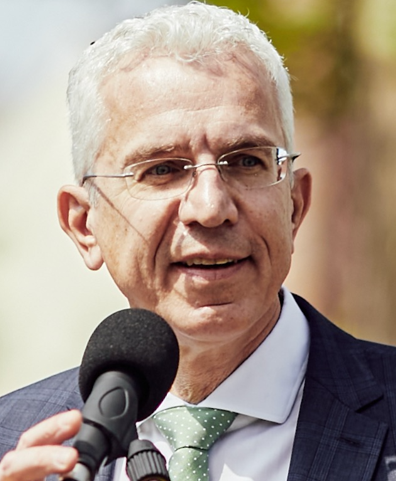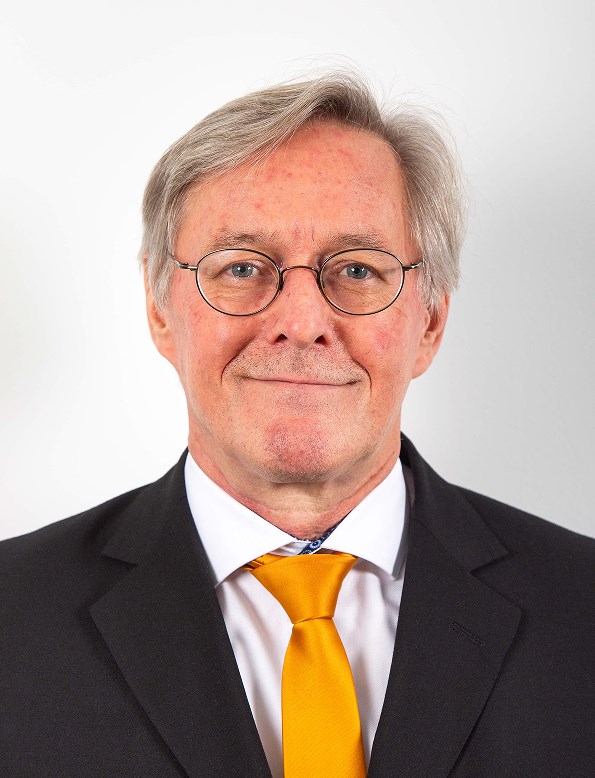Keynote Speakers
Prof. Paul H. Mayrhofer
Institute of Materials Science and Technology, TU Wien, 1060 Vienna, AustriaSpeech Title: Materials Science-Based Guidelines to Develop Robust Hard Thin Film Materials
Abstract: For mechanically dominated load profiles, nitrides are preferred as the base material for structural and functional hard coatings, while oxide-based materials offer better protection against high-temperature corrosion (such as oxidation). Thus, when mechanical and thermal loads are combined, the nitrides used should also have excellent stability against temperature and oxidation. How to develop such nitride materials that can withstand both high mechanical and thermal loads is the focus of this review article. This is done primarily with the help of experimental and theoretical investigations of the Ti–Al–N system.
On the basis of transition metal nitride coatings, we discuss important material development guidelines for improved strength, fracture toughness as well as thermal stability and oxidation resistance. Using various superlattice coatings, we further discuss how such nanolamellar microstructures can improve both the strength and fracture toughness of hard coating materials. In addition, other concepts for improving fracture toughness are discussed, with a focus on those that can increase both fracture toughness and hardness.
The individual concepts allow to design materials to meet the ever-growing demand for coatings with a wide range of excellent properties and outstanding property combinations.
Biography: Paul Mayrhofer has pioneered age hardening within ceramic thin films and is fascinated by phase transitions in general. His research activities focus on developing nanostructured materials by a combination of computational and experimental material science. He won some prestigious prizes and served scientific societies in numerous appointed and elected positions. He is an elected member of the Austrian Academy of Sciences. In 2018 he was appointed Fellow of the American Vacuum Society (AVS). Since 2020 he has been the Delegate for Materials Science at the Austrian Science Fund. In 2023 he won the Bill Sproul Award of the AVS for his seminal contributions to materials-science-based guidelines for improved thermal stability, strength and toughness of nitride and boride-based thin film. He has published more than 330 SCI-listed papers in the general field of thin film materials science, with >16,700 citations to these (h-index of 69; GS), and holds 13 patents regarding hard coatings.
Prof. Dr.-Ing. Klaus Holschemacher
Structural Concrete Institute (IfB), Leipzig University of Applied Sciences (HTWK Leipzig), GermanySpeech Title: Carbon-Reinforced Concrete – An Innovative Material for Structural Applications
Abstract: Carbon-reinforced concrete (CRC) is characterized by the replacement of traditional steel bar or steel mesh reinforcement by carbon fibre reinforced polymer (CFRP) based grids or bars. Because, in contrast to steel, the CFRP reinforcement cannot corrode, the concrete cover may be reduced to essentially lower values, just needed for ensuring a sufficient bond behaviour between reinforcement and surrounding concrete. In the result, the total height of CRC members may be decreased without reduction of their load-bearing capacity in many cases. It means, in other words, that with lowered volume of concrete the same resistance of the structure is achievable. Thus, application of CRC can provide an important contribution towards improved sustainability and save natural resources.
The paper describes the basics of the design of CRC members. For this, the partial safety factor and the design value of material strength of CFRP reinforcement is discussed.
Following, the particularities in the construction of precast CRC elements are described. In detail, the possibilities and challenges of automized production using robotics are introduced. Thereby, it is advantageous to use the electrical conductivity of the carbon fibres. Besides their contribution to the structural resistance, the carbon reinforcement may be used for signal processing or near to surface heating.
It may be expected that CFRP reinforcement replaces the ordinary steel reinforcement in concrete members in near future. Already now, there are many applications of CRC in construction practice. They verify impressively the high performance of CRC.
Keywords: CFRP reinforcement, carbon-reinforced concrete, design, automized production.
Biography: Klaus Holschemacher studied Civil Engineering at the Technical University of Leipzig (TH Leipzig) and has got PhD degree from this university in 1992. Since 1996 he is Professor for Structural Concrete at the Leipzig University of Applied Sciences (HTWK Leipzig). He is the founding director of the Structural Concrete Institute (IfB) and the head of this institution until now. Holschemacher has successfully applied for research funds with a total amount of more than 10 million €. His main research interests are carbon and textile reinforced concrete, fibre reinforced concrete, hybrid structures, and bond of reinforcement in cementitious materials.
Holschemacher is author, respectively co-author, of more than 400 research papers. He is member of numerous scientific organizations, e.g. fib, ACI, ASCE. Since 2018, he is board member of the German Carbon Concrete Composite e.V. Besides his activities in research, he is working as consulting engineer and as publicly appointed and sworn expert.
Prof. Giuseppe Carlo Marano
Department of Structural, Geotechnical and Building Engineering, Politecnico di Torino, ItalySpeech Title: The Importance of Including Constructability Criteria and Sustainability Aspects within the Optimal Design Process
Abstract: In the last century, the strong limitations of the available optimization approaches demonstrate the importance of a change of paradigm in the problem formulation of the optimization problem. The real challenge is the development of optimal strategies for reducing structural complexity in situ and minimizing material waste resulting in significant economic and environmental cost-saving.
This seminar is focused on the implementation of innovative optimization strategies for solving multi-criteria problems in which the structural design of civil buildings complies with the sustainability goals of this century and the constructability needs occurring during the construction stage. The feasibility of the proposed approach will be demonstrated for real-world structures and the crucial role of Carbon footprint (CO2) in the design process will be assessed. All the stages of the construction process have been involved in the optimization tool by performing accurate Life Cycle Analyses (LCA). In this way, the identification of the most critical parameters (i.e. components of the structure) that control the construction process can be evaluated in terms of total environmental impact. Finally, a sustainable approach for reducing cutting losses in steel structures will be discussed.
Biography: Prof. Giuseppe Carlo Marano is a structural engineer, and internationally recognized for his research and expertise in the field of structural optimization in new or existing buildings or bridges and in identification and characterization of bridges and structures and seismic protection. His international experience is quite extensive, as he has been a Visiting assistant professor at Cambridge (2002), associate professor in 2011 at Politecnico di Bari, visiting Professor at Loughborough University (2012) and at Hunan University (China) in 2014. He has been research fellow at the SIBERC (Sustainable and Innovative Bridge Engineering Research Center) at the Fuzhou University (China) since 2014; at the same university he had been full Professor in Structural Design from 2015 to 2018. From 2018, he is full professor in Structural Design at Politecnico di Torino.




